Sakha Shaman: A Healing Ritual
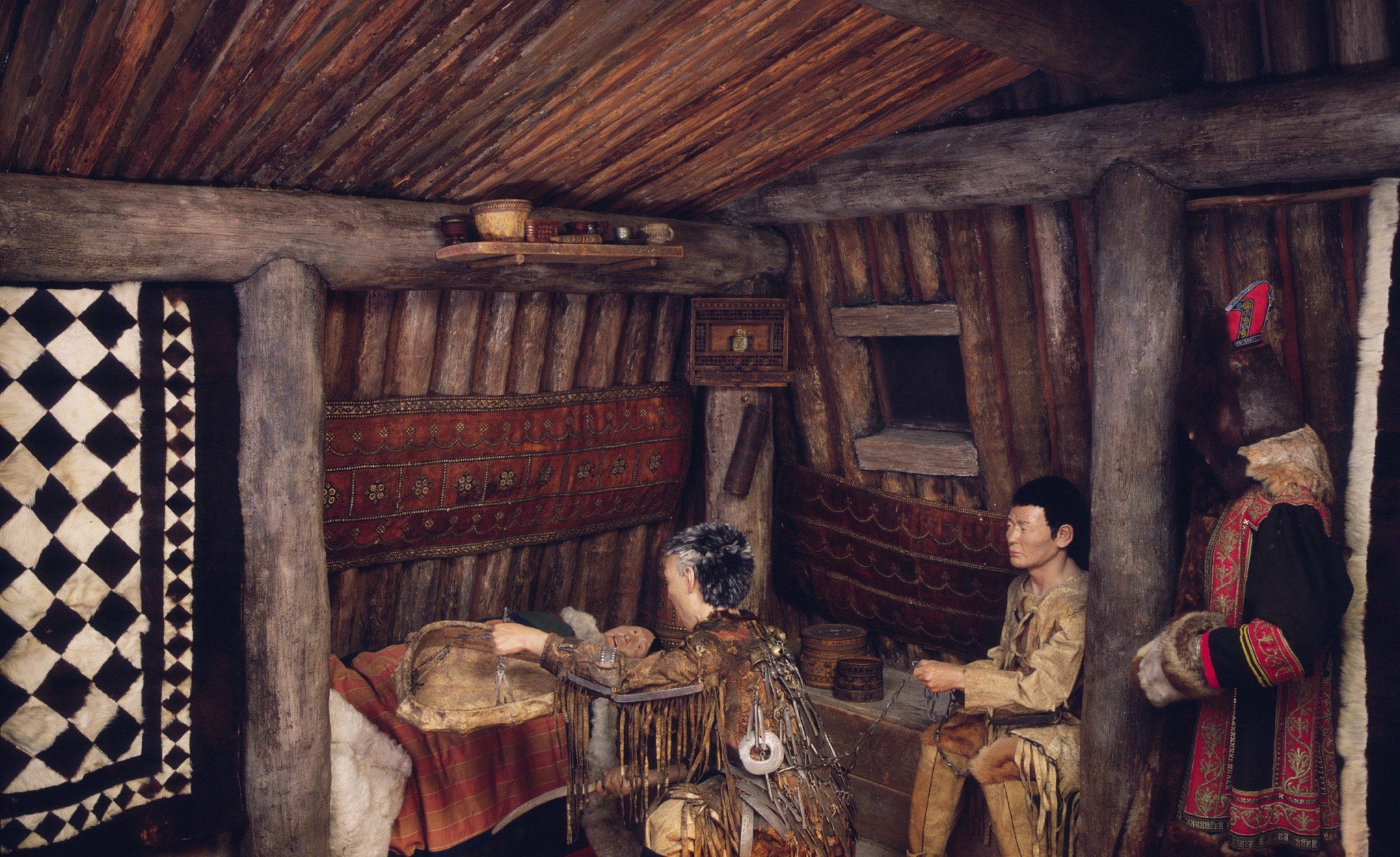
The Sakha Worldview
The Upper world
The Upper world: The sky world has nine levels. The Sun as the Highest Brightest Creator (Urung Ajy Toyon Tangara) lives here, as do good and evil spirits. Each occupy their own specific area.
The Middle world
People and animals live here as well as certain spirits of mountains, plants and other natural phenomena.
The Lower world
The underground world is surrounded by fog, devoid of sunlight and contains demons.
Mannequins
Tap on the points for information

Sick Woman
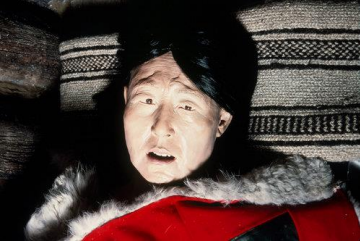
The look of horror on this woman’s face was constructed to suggest that something terrible is happening within
her. The shaman is helping to cure her by negotiating with the evil spirits that plague her as he traverses
between the three worlds of Sakha cosmology.
Shaman (oyuun, Шаман)
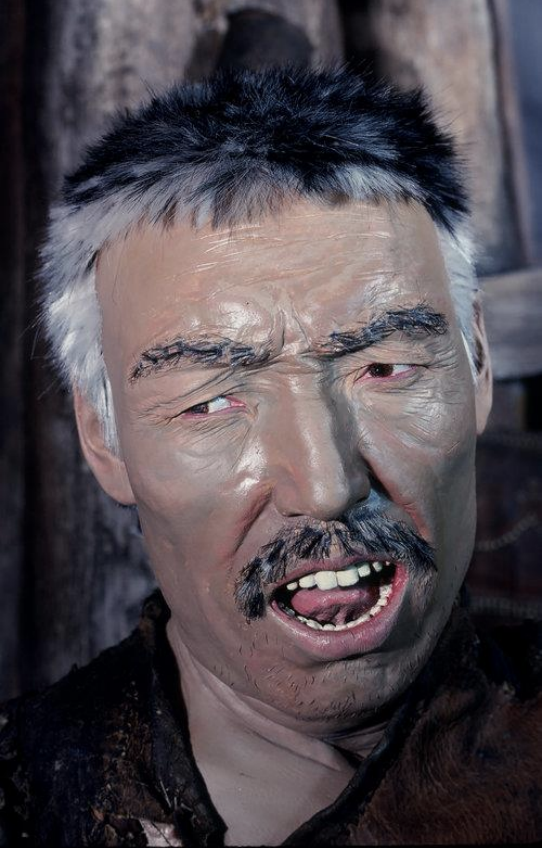
Crouching before the sick woman, the shaman is posed using a drum, which he beats to induce a trance. With the
support and encouragement of the surrounding community, the shaman will heal the sick woman by traveling through
the Upper or Lower worlds to retrieve the kut, the missing part of her soul.
Shaman’s Assistant (Kuturukschut)
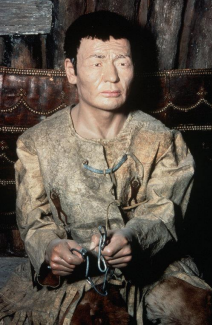
The shaman’s assistant sits behind the shaman, holding the end of a chain to keep him from getting lost or being
carried away by evil spirits. Since the lower world is dark, foggy and hard to navigate, evil spirits may
distract the shaman and take him in the wrong direction.
Woman in a Winter Coat
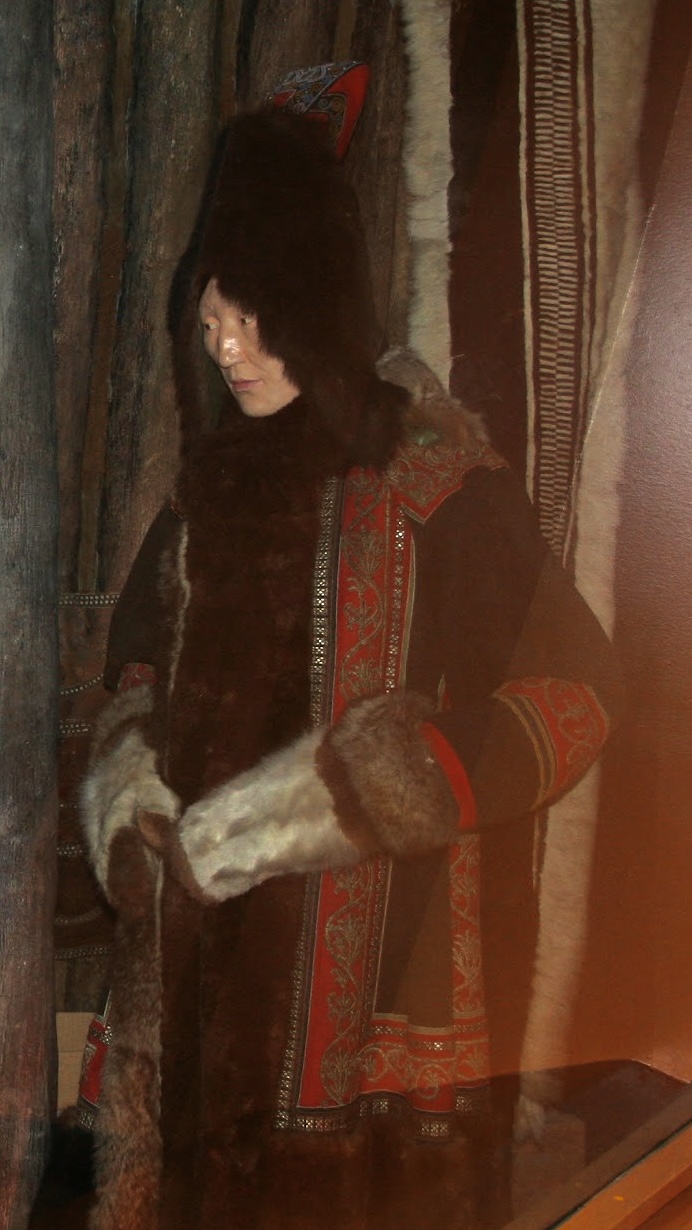
This woman was placed in the diorama to showcase a Sakha winter coat. This coat’s embroidery illustrates the
Russian influence on traditional Sakha clothing. Sakha people normally only wear coats outside the house, and
Sakha visitors considered the inclusion of this mannequin strange.
Objects
Tap on the points for information

Russian Orthodox Icon
![]()
![]()
A Russian Orthodox icon calls attention to a simultaneous belief in both a Christian god and the ability for
shamans to reach the world of spirits. Though the icon was facing outward in the original case, it more
accurately would be turned to face the wall while the shaman is performing.
Hearth
The Kamlanie ritual is traditionally performed at night, or over several nights, beside a hearth or at a sacred
area; the shaman plays the drum to channel supporting spirits before further communicating with them near the
hearth. A hearth was originally installed in the diorama between the shaman and the sick woman but was removed
due to electrical issues.
The Shaman’s Regalia
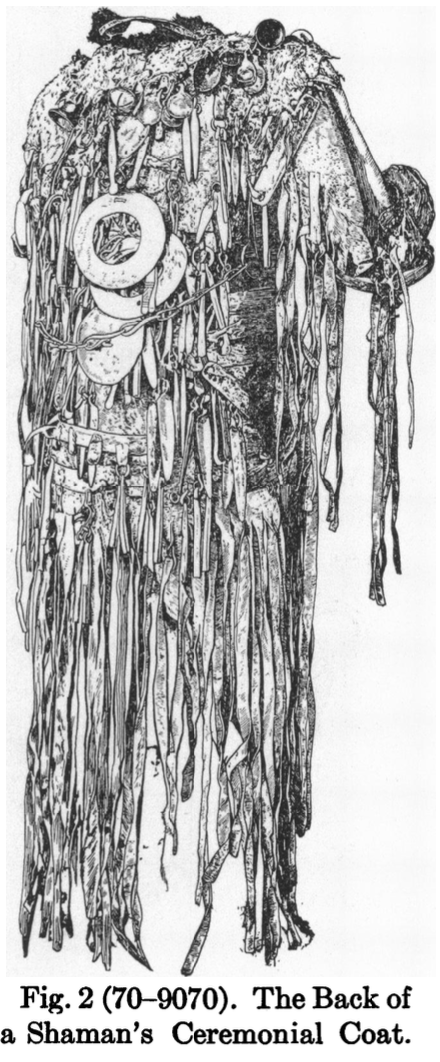
The oyuun kiirar tangaha (shaman’s regalia) has always been extremely sacred in Sakha culture and is still worn
by Sakha oyuun (shamans) today during the ritual.
The Drum (düñür or tüñür)

This drum is covered in the hide of a young bull. According to the Russian ethnographer Jochelson, the shaman
heats his drum to tighten the hide and make a clearer sound. The stick would then act as a whip to prepare and
mobilize the drum-horse for the journey through the worlds of the spirits.
The Chain
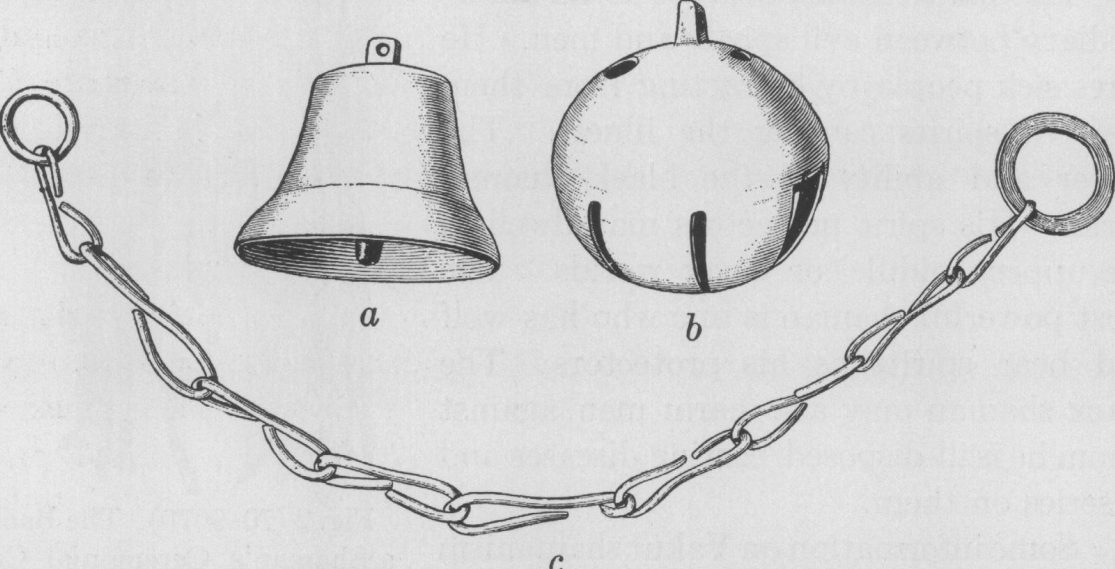
This chain represents the shaman’s connection to the spiritual world. By using it in the ritual, the shaman can
avoid getting lost or being carried by evil spirits.
Jesup North Pacific Expedition

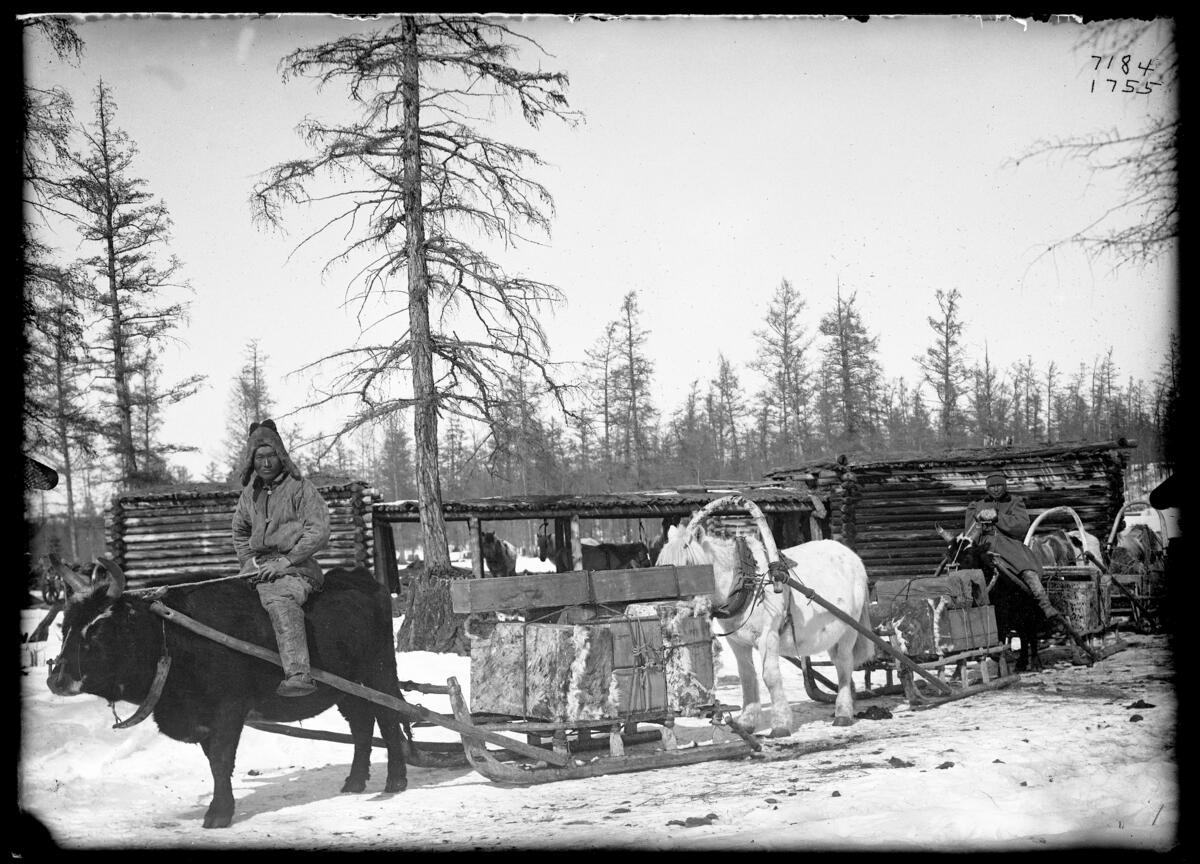
“Transporting Yakut collection items near Yakutsk.” AMNH Special Collections, Photographic Negative Collection, 5 x 7: 1755. Photographer: Waldemar Jochelson.
The AMNH collection includes some shamanic artifacts that are now rare because many shamanic objects were confiscated or burned during the Soviet anti-religious campaigns in the late 1920s and 1930s. The oyuun kiiirar tangaha (shaman’s regalia) shown below was purchased by Jochelson between 1900 and 1902 in the Meginski district of the Yakut province (which later became the Sakha republic) from a Sakha man by the name of Slyeptzov. Continue reading to learn more about the shaman’s regalia below.
Shaman Coat
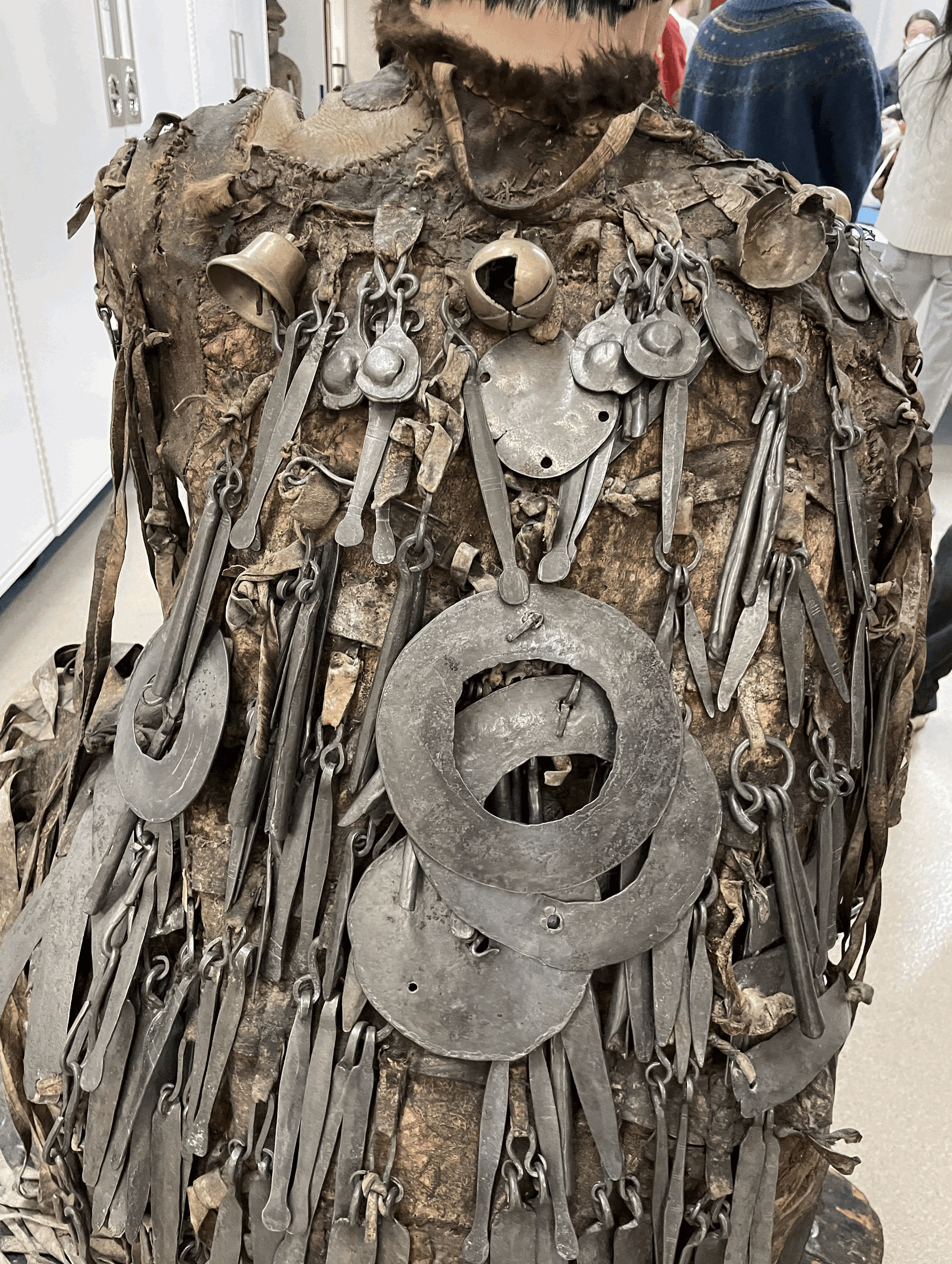
The Three Discs

According to Jochelson, the three discs represent the sun and the moon, both of which illuminate the shaman’s path, as well as the ice hole through which the shaman descends into the Lower world.
The Iron Pendants
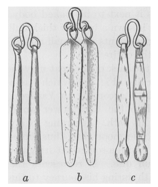
These iron pendants represent the feathers of the shaman’s Bird Spirit, which gives him the strength and ability to fly.
The Iron Straps
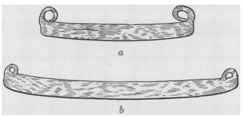
These iron straps attached to the upper sleeve on the back of the coat represent bird and human bones, both of which give him strength and protection for his journey.
Sakha Shamanism Today
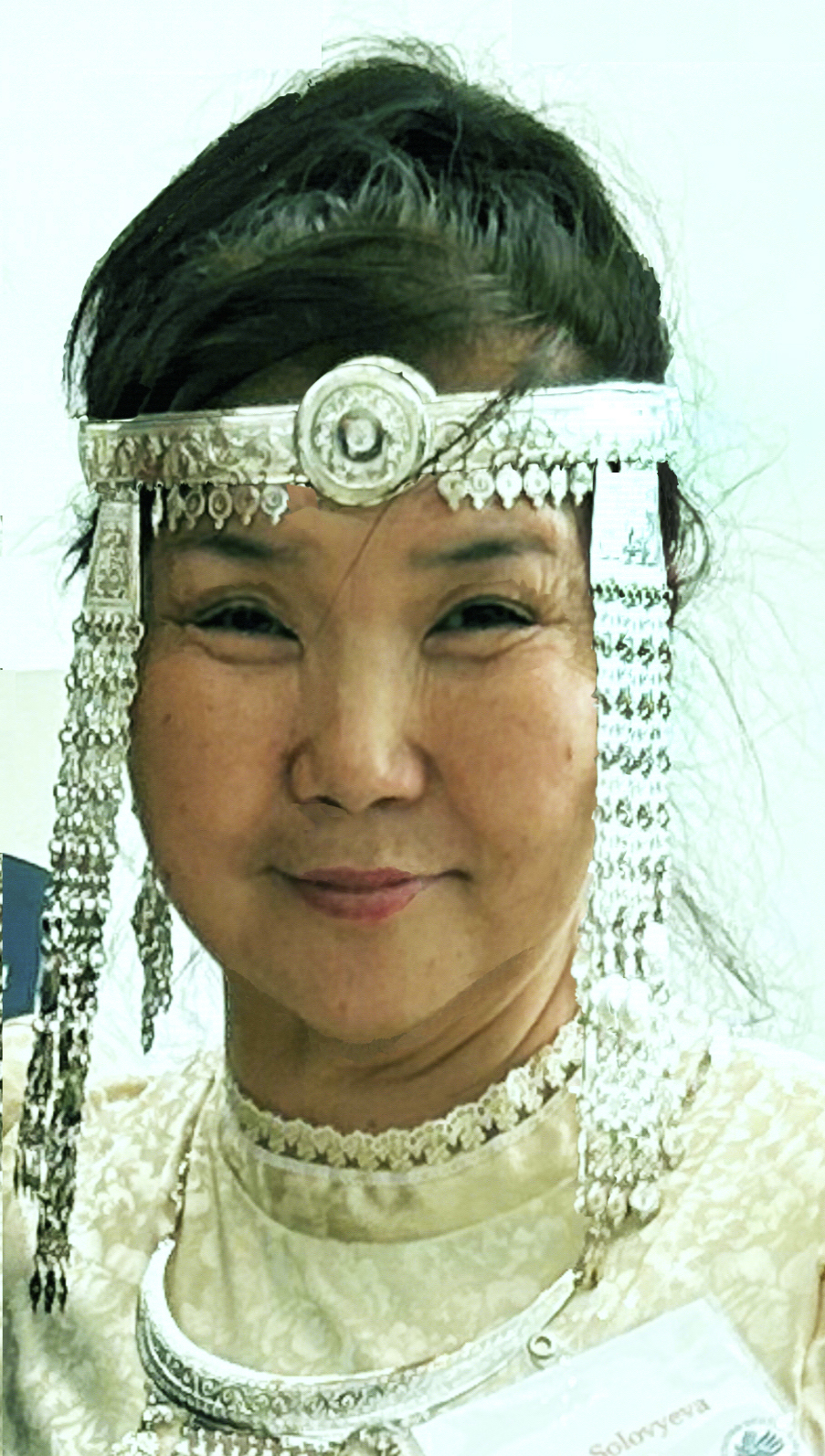

Indigenous Sakha scholar Vera Solovyeva on what shamanism looks like today for Sakha people:
“Shamans still play a very pivotal role in Sakha society. There are White shamans called Ayii Oyuuna or Algyschit, who ask for blessings from benevolent spirits for all people during the ritual honoring of the Yhyakh (Sun). There are emchits (medicine people), who are divided into the otohut (who heal people with herbs and other traditional remedies) and Unguokh tutuuta (who specialize in the healing and correction of bone fractures, dislocations, and other problems in the musculoskeletal system). Other shamans act as psychotherapists and psychologists who help people cope with psychological problems, such as helping people find their way based on the traditional worldview and cultural characteristics of the Sakha people. There are also Korbuүөchchu, who are capable of seeing the future and the past, finding people and lost things. Recently, Sakha shamans have also become leaders of social movements of revitalizing traditional belief, Sakha Indigenous values and ethic, return native Sakha names and preservation of their native language. They participate in protecting the environment, restoring historical truth, and even promoting the political reorganization of Russia. The shaman Aleksandr Gabyshev has been notably active.”
—Vera Solovyeva, March 19, 2024 interview
Russian Translation:
“Шаманы по-прежнему играют очень важную роль в обществе Cаха. Есть белые шаманы, называемые Айыы Ойууна или Алгысчыт, которые просят благословения у благосклонных духов для всех людей во время ритуала почитания Солнца. Есть эмчиты, которые делятся на отоhут (лечат людей травами и другими традиционными средствами) и ууҥуох тутааччы (специализируются на лечении и исправлении переломов костей, вывихов и других проблем в опорно-двигательном аппарате). Другие шаманы выступают в роли психотерапевтов и психологов, которые помогают людям справиться с психологическими проблемами. Как, на пример, найти свой жизненный путь, основываясь на традиционном мировоззрении и культурных особенностях народа Саха. Есть также көрбүөччу, которые способны видеть будущее и прошлое, находить пропавших людей и потерянные вещи. В последнее время саха-шаманы также стали лидерами общественных движений за возвращение исконно якутских имен и сохранения родного языка. Они участвуют в защите окружающей среды, восстановлении исторической правды и даже, как Александр Габышев, пытаются участвовать в политическом переустройстве России.”


